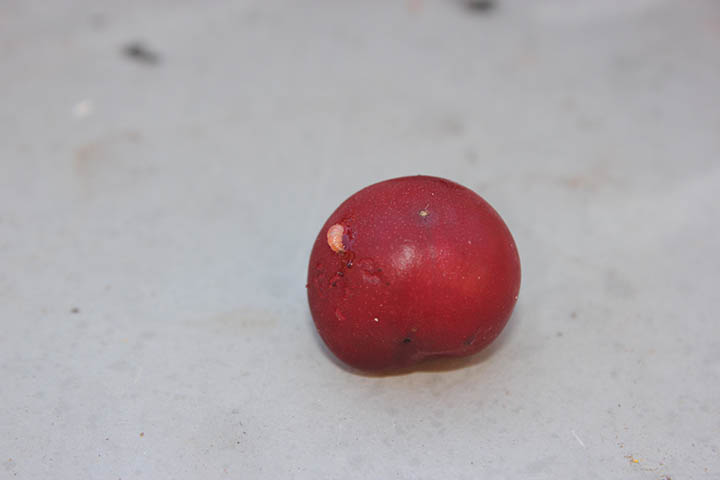
Cherry maggot fly
Damaging
The cherry fruit fly (Rhagoletis cingulata) is an occasional pest of dwarf sour cherry and other cherry fruits such as chokecherry.
The adult flies emerge in mid-May to mid-June. Females insert one egg per developing fruit and larvae develop within the fruit. These flies are very mobile so infestations can appear to come out of nowhere. Infected fruit will often develop a darkish area and may fall prematurely.
To separate infested fruit from uninfested fruit, the USask Fruit Program finds that infested fruits float when submerged in a tub of water, making it easier to separate and harvest undamaged fruit.
Insect tree covers (highly effective)
- Specially designed covers are available in a range of sizes that completely cover the tree with insect netting. These should be applied as soon as the tree has finished flowering – any earlier and pollinators such as bees will not have access to the flowers. If it is properly fitted, the net will exclude all of the flies.
Tarping the ground to prevent pupae from overwintering in soil (highly effective to prevent pupa from over-wintering)
- As fruit starts to ripen, place a tarp beneath the cherry tree to catch all of the falling fruit to prevent the larvae from burrowing into the soil to over-winter. Keep an eye out for premature fruit drop and collect the fallen fruit as soon as possible.
Sticky traps (somewhat effective, good for scouting for the fly)
- Yellow sticky traps are available in a large size for this purpose. Hang traps just after the tree has finished flowering and the fruit starts to develop.
- Use 3 to 10 traps (depending on the size of the tree) throughout the tree near the edge of the canopy.
- Traps in general will not completely eliminate the problem but are useful for scouting for the flies.
Disposing of infested fruit
- Do not compost infested fruit as the larvae can move into the soil near the composter to over-winter. You can, however, crush the infested fruit and place it in a black garbage bag. Leave the bag in hot sun for a week to kill the larvae. The mash can then be placed in the compost or buried provided that all the larvae are dead.
Fruit that has been infested with the larvae is very unappetizing and not suitable for fresh eating or pies. However, gardeners report that they use the spoiled fruit for making wine. If you do, ensure that there is no rot or secondary bacterial infection inside the fruit.
Source:
Williams, S.; Skinner, H. (2011). Gardening, naturally: A chemical-free handbook for the Prairies. Regina, Saskatchewan: Coteau Books.

